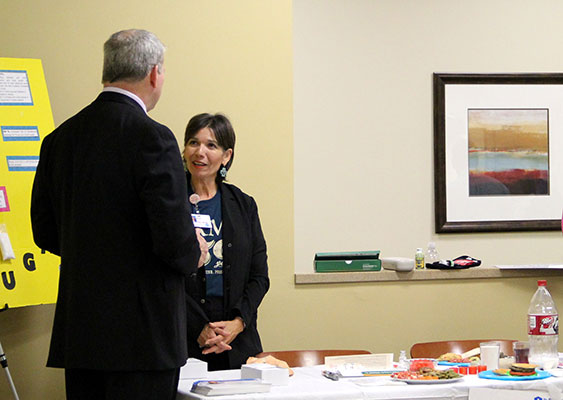
Halloween Tips for Children with Diabetes
A holiday such as Halloween that is focused on sugary treats can be a trick for children with diabetes.
According to GRMC Diabetes Educator Ann Camacho, children with diabetes may occasionally enjoy candy. However, it is important for parents to plan ahead and incorporate the candy into their child’s meal plan. Planning ahead and knowing how many carbohydrates are in the candy will help to prevent a spike in their child’s blood sugar.
With Halloween falling just one day prior to Diabetes Awareness Month, Ann has prepared additional tips that will help all families have a healthy Halloween.
Go trick-or-treating (with a twist)
- Plan to eat a well-balanced meal before trick-or-treating to lessen the tendency to crave candy and sweets. Ditto for Halloween parties.
- Choose a safe neighborhood to walk together as a family and plan to collect candy to donate—places like an adult living facility may welcome your candy donation. In exchange for donating the candy, offer your child(ren) a movie night or a day at the park.
Host a Halloween party
- Sponsor a safe place to gather with people you know. For instance, have a small neighborhood grilling night with a Halloween theme.
- Provide nutritious snacks such as nuts, trail mix, and ants on a log (made with celery, peanut butter and raisins).
- Serve water infused with fruit, and use fun ice cubes shaped as ghosts or pumpkins.
- Tell ghost stories set to spooky background music.
- Play games like placing your hands in a bowl of spaghetti with squishy balls and gooey liquid.
Non-candy options for trick-or-treaters
- Instead of, or in addition to, handing out candy to trick-or-treaters, consider fun alternatives such as stickers, air-popped popcorn bags, play jewelry, toy soldiers, or other toys without small detachable parts such as spider rings, funny eye glasses, etc.
- Such options not only are sensitive to children with diabetes, but also are sensitive to children with food allergies.
- The most important thing, Ann advises, is to surround yourself with like-minded family and friends who understand why it’s important for children with diabetes to avoid candy as much as possible.“I think if the time spent is fun and engaging, then hopefully the children may not miss the candy so much,” she says.


